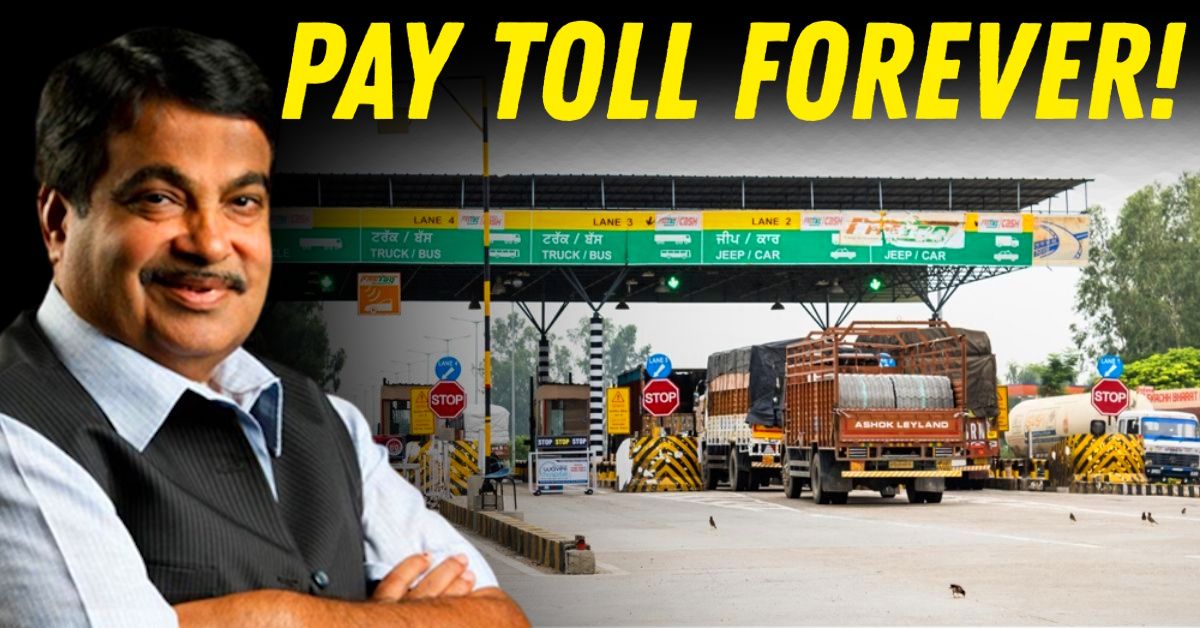Why Indians Are Angry at India's Spanking New Expressways


India’s newest expressways, with their wide lanes and high-speed promise, should be symbols of modern progress. Instead, for many, they represent a growing cost burden. A fresh round of toll hikes introduced in April 2025, coupled with high vehicle taxes and unrelenting fuel prices, has sparked frustration among a middle class already stretched by the rising cost of living. The infrastructure is expanding, but so is the disconnect between ambition and affordability.
Toll revisions have become an annual affair. In 2025, rates increased at 855 plazas across the country, the second hike in a year. On the Bengaluru-Mysuru Expressway, for example, car tolls rose from ₹135 to ₹165, a jump of over 22 percent.
Regular travellers, even if they use these roads just a few times a week for work or family visits, can find themselves spending more than ₹6,000 a month on tolls. For long-distance truckers and freight operators, the burden is steeper. A single trip on the Delhi-Meerut corridor now costs ₹580 for a commercial vehicle.
While these increases are often linked to wholesale price index adjustments, the explanation offers little comfort to commuters whose salaries haven’t kept pace with inflation. Many are questioning whether these toll collections are truly about road upkeep or if they disproportionately benefit private operators under public-private agreements. Discussions online and in automotive communities frequently point to the lack of transparency around how toll money is being spent.
For the average Indian, buying a car no longer guarantees affordable personal mobility. The tax structure plays a major role. GST on vehicles ranges from 28 percent for small cars to nearly 50 percent for larger ones like SUVs. This pushes the on-road price of a ₹10 lakh car up to ₹14 or ₹15 lakh, putting it out of reach for many first-time buyers.
Fuel prices continue to be a major point of contention. In Delhi, petrol remains close to ₹95 per litre, while diesel hovers around ₹88. For families making several weekly trips of 30 to 50 kilometres, fuel expenses alone can eat up a significant portion of their monthly income. Meanwhile, the central fuel cess - unchanged since 2022 - has generated nearly ₹39 lakh crore since 2014. But since this revenue is not shared with states, local public transport systems often remain underfunded or inadequate.
This creates a vicious cycle. Without good public transport options, people feel forced into buying private vehicles. And once they do, they’re hit by taxes, high fuel prices and rising tolls.
Expressways are designed to reduce travel time, but in practice, they often shift congestion instead of solving it. The Pune-Mumbai Expressway saw a modest toll hike of ₹5 per car recently. That may seem negligible, but over a month of round trips, the added cost can exceed ₹1,000. This is on top of fuel and maintenance expenses.
Old state highways that used to serve as free alternatives often fall into disrepair after a nearby expressway is opened. The result is that people are funnelled onto the toll road, even if they would have preferred a slower but cheaper option. Frustration also stems from the way toll collection contracts are managed. Many agreements are extended beyond their original timelines, creating a scenario where users continue to pay long after construction costs have been recovered.
Many users expected FASTag to bring convenience, but the reality hasn’t always matched expectations. Errors in electronic billing are not uncommon, and resolving them can take several weeks. In the meantime, drivers are left covering the cost out of pocket. Digital payment discounts, offered through mobile apps, are unavailable to those without access to smartphones or bank accounts, adding another layer of exclusion.
The numbers are even more challenging for commercial vehicle operators. A truck running 300 kilometres between Mumbai and Ahmedabad may spend over ₹1,700 on tolls and another ₹2,600 on diesel, totalling over ₹4,300 per day. With tight margins, these costs encourage practices like overloading or avoiding toll routes altogether, compromising both road safety and infrastructure use.
Most commuters are not against development. The frustration lies in how it is funded. Many feel they are being taxed multiple times: through income tax, GST, fuel cess and now increasingly aggressive toll collection. Several policy proposals have emerged, including linking toll charges to income categories using registration data, redistributing fuel cess to support state-level transit projects and ensuring greater transparency in toll revenue allocation. But until such measures become reality, the sense of inequity persists.
India’s infrastructure goals are ambitious, and the expressway network is a visible part of that. But without public transport systems that extend the benefits to a broader section of the population, those roads risk serving only a few. In cities like Bengaluru and Pune, where expressways feed into crowded, underdeveloped urban stretches, the time saved on the highway is often lost in city traffic.
For India’s growing middle class, the anger isn’t just about tolls. It’s about a broader feeling that mobility is becoming a luxury. As India positions itself as an economic force, citizens are looking for infrastructure that works for them. Until road, tax and transit policies are brought in line with lived realities, the tension is unlikely to ease. One toll hike at a time, the divide continues to grow.